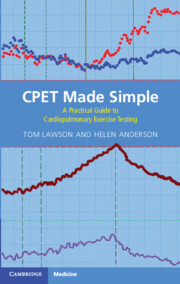Book contents
- CPET Made Simple
- CPET Made Simple
- Copyright page
- Contents
- Glossary
- Abbreviations
- Introduction
- Part I What Is Cardiopulmonary Exercise Testing?
- Chapter 1 What Is Cardiopulmonary Exercise Testing?
- Chapter 2 Exercise Physiology
- Chapter 3 Anaerobic Threshold, Ventilatory, and Cardiovascular Response to Exercise and the Fick Principle
- Part II Conducting a Cardiopulmonary Exercise Test
- Part III Interpreting a Cardiopulmonary Exercise Test
- Part IV Assessment of Exercise Capacity and Causes of Exercise Limitation and Dyspnoea
- Further Reading
- Index
Chapter 2 - Exercise Physiology
from Part I - What Is Cardiopulmonary Exercise Testing?
Published online by Cambridge University Press: 04 April 2024
- CPET Made Simple
- CPET Made Simple
- Copyright page
- Contents
- Glossary
- Abbreviations
- Introduction
- Part I What Is Cardiopulmonary Exercise Testing?
- Chapter 1 What Is Cardiopulmonary Exercise Testing?
- Chapter 2 Exercise Physiology
- Chapter 3 Anaerobic Threshold, Ventilatory, and Cardiovascular Response to Exercise and the Fick Principle
- Part II Conducting a Cardiopulmonary Exercise Test
- Part III Interpreting a Cardiopulmonary Exercise Test
- Part IV Assessment of Exercise Capacity and Causes of Exercise Limitation and Dyspnoea
- Further Reading
- Index
Summary
Energy is needed to perform the work required while exercising. This energy is supplied via cellular metabolism. In simple terms, the food that we eat supplies us with the necessary substrate for energy production. During this process, energy is ‘trapped’ in molecules of adenosine triphosphate (ATP).
- Type
- Chapter
- Information
- CPET Made SimpleA Practical Guide to Cardiopulmonary Exercise Testing, pp. 5 - 17Publisher: Cambridge University PressPrint publication year: 2024

